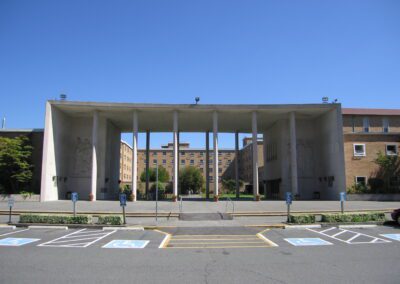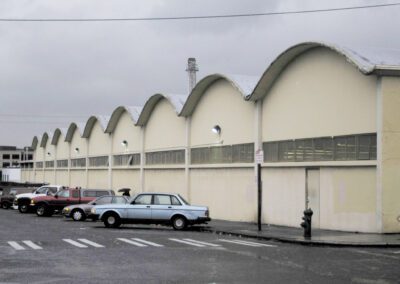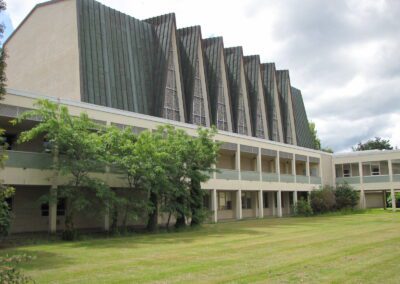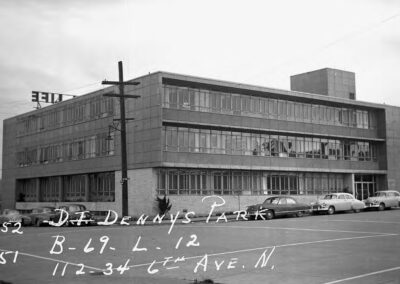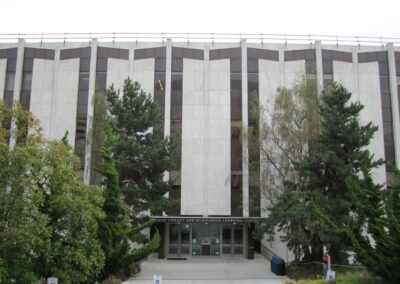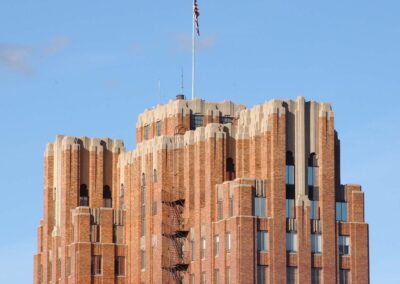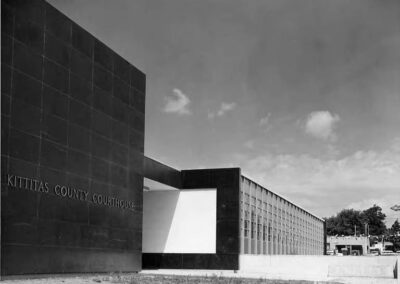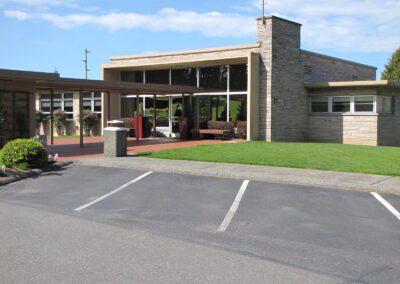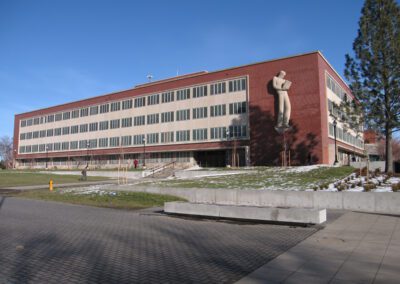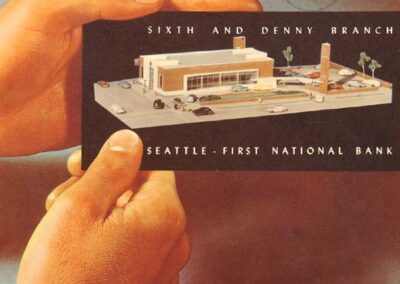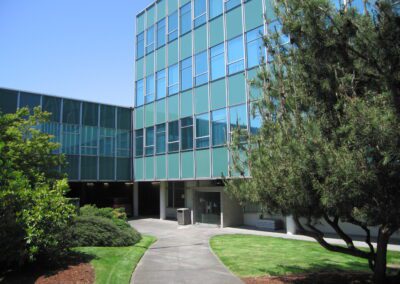
Maloney, John W.
(1896 – 1978)
With a career spanning more than fifty years, John William Maloney made a significant impact on the built environment in Washington State. His early work reflects the architectural eclecticism of the 1930s, while his later work shows his mastery of modern materials.
Maloney was born in Sacramento, California on October 6, 1896. His family moved to the Puget Sound area in the early 1900s and he attended Auburn High School. Reportedly Maloney received his formal architectural education from the University of Washington and Stanford, but specific details and dates of graduation are unknown. After serving in World War I, he established an architectural practice in Yakima in 1922. His most notable building in Yakima is the A. E. Larson Building (1931), an eleven-story Art Deco masterpiece and the city’s first skyscraper. His skills were soon recognized beyond central Washington and he began to receive numerous commissions across the State.
Seeking a larger profile, in 1943 Maloney decided to open an architectural office in Seattle, where he went on to design a number of high-profile schools, hospitals, and office buildings. Educational projects became a specialty and he designed numerous buildings for several colleges, including Washington State University, Central Washington University, and Gonzaga University. He also designed the entire campus at the Perry Technical Institute in Yakima (1940). Maloney also designed a number of buildings for the Seattle Public School District, including Meany Junior High School (1955), Jefferson Park Junior High School (1956), Asa Mercer Junior High School (1957), an addition to Grover Cleveland High School (1958), and Rainier Beach Junior-Senior High School (1960).
Maloney also had a strong connection to the Catholic Church and he designed dozens of churches and schools for the Archdiocese. Notable designs include St. Benedict Catholic Church in Wallingford (1956), Holy Family Church in West Seattle (ca. 1956), Sacred Heart Church in Lower Queen Anne (ca. 1959), St. Anne Church and Rectory on Queen Anne Hill (1960), and Providence Heights College in Issaquah (1961). His chapel for St. Thomas Seminary in Kenmore (1958), now home to Bastyr University. The main chapel is considered one of the premiere film scoring stages in the United States due to its superb acoustics.
As a sole practitioner, Maloney designed a number of forward-looking buildings using innovative structural technologies and modern design elements. Notable buildings include the Northwestern Life Insurance Co. Office (1952), a warehouse for the Seattle School District (1955), the Kittitas County Courthouse (1955), the Blue Cross Insurance Building on Seattle’s First Hill (1958), and the Seattle First National Bank/Denny Way Branch (1950). Other projects included hospitals and health care facilities stretching from Long Beach California to Alaska.
In 1963, Maloney promoted several associates to full partner status including; Arthur K. Herrington, Tibor Freesz, and Ralph O. Lund. Renamed Maloney, Herrington, Freesz & Lund, notable projects during this time include the Lemieux Library at Seattle University (1966), an addition to the WSU Student Center /Compton Union Building (1967), Johnson Tower – WSU (1967), the Fairbanks Memorial Hospital in Alaska (1969), the Skagit Valley Hospital (1966) in Mt. Vernon, the Columbia Hospital (1967) in Dayton, St. John’s Hospital (1968) in Longview, Mason General Hospital (1968) in Shelton and Everett General Hospital (1969) in Everett. Maloney’s son, John Jr. had joined the firm in the late 1970s and continued working there until 1976.
Maloney Sr. retired from the firm in 1970. With its new principals, the firm continued under the name until 1980 when it was renamed Mills, John & Rigdon. Maloney died in Seattle on January 23, 1978.
Download PDF document to see a list of known Maloney projects. Download PDF (1.6M)
– Michael C Houser
Kittitas County Courthouse | Ellensburg
Built 1956 | Source: University of Washington Special Collections
Brochure – Seattle First National Bank – Denny Way Branch | Seattle
Built 1950 | Source: Washington State Library
